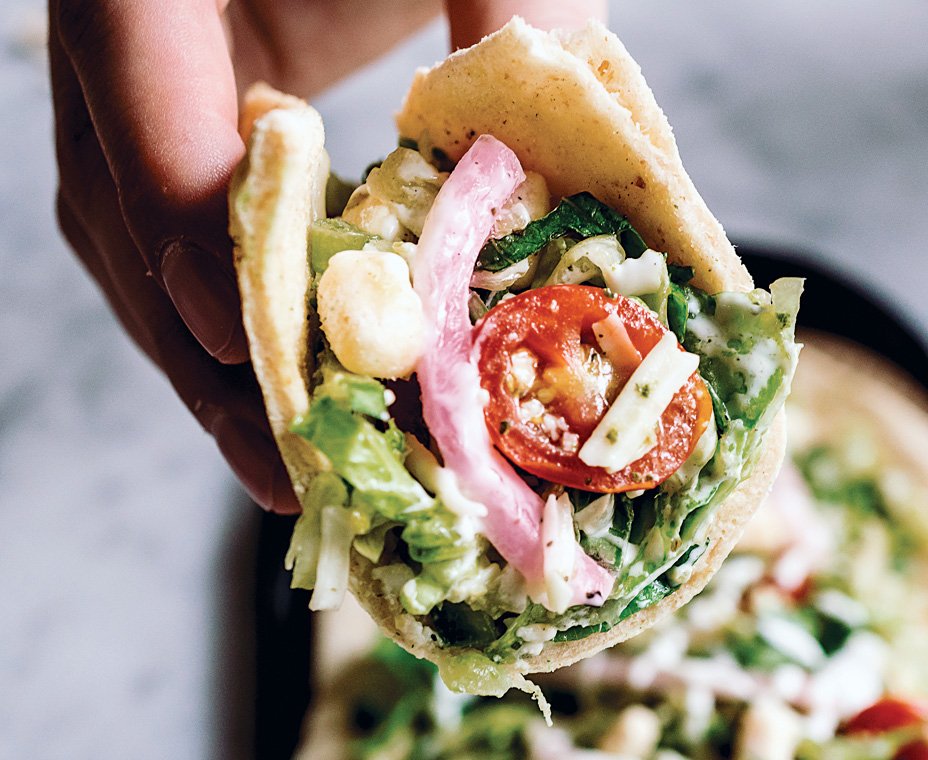There are certain words that come to mind whenever pizza is mentioned: indulgent, delicious, comforting, crowd-pleasing. And now another, perhaps surprising, one is entering the lexicon: healthy. That’s because a growing number of limited-service pizza concepts are making a concerted effort to provide guests with the better-for-you options they’ve been lusting after for years.
“People want healthier choices. They want to know more about the ingredients being used,” says Nicole Quartuccio Ring, vice president of nutrition strategy for restaurant nutritional analysis experts Healthy Dining Finder. “And it’s not just a fad. This is going to become the new way consumers eat and choose the restaurants they go to.”
But rather than low-carb or low-calorie options, today’s pizza brands are creating their own definitions of what healthy pizza is, namely by cleaning up their ingredient lists, providing a broader range of ingredients, and allowing for more customization. In 2015, for example, Papa John’s began spending a reported $100 million a year to wipe its ingredient list of artificial colors, corn syrup, and a long list of other historically unhealthy options.
Smaller chains like New York–based Skinny Pizza are crafting entire concepts around this definition of healthier pizza. Skinny Pizza uses natural flour free of potassium bromate—an ingredient banned in Europe and several other countries—as well as organic tomato sauce made fresh in house. It also bakes its antibiotic- and added hormone–free chicken rather than frying it; uses nitrate-free pepperoni; and sources all-natural sausage, while its veggies are farm-fresh and local when possible.
“Almost every restaurant in this space has vegan options, whole grains. They’re making their sauces from scratch; they’re using less prepared products,” Quartuccio Ring says. “They’re aware of and trying to deliver on that transparency of providing more healthful options.”
San Francisco–based Hot Italian Pizza Bar is so confident in its better-for-you pizza approach that it’s deemed itself the #healthiestpizza in the country. As the first and only U.S. pizza brand to receive a REAL Certified Food Award from the United States Healthful Food Council, the brand is committed to providing clean, fresh, and sustainable ingredients. It also uses an organic house-milled flour to craft its dough, which it then ferments and proofs for 24–48 hours to break down proteins and make it easier to digest.
Not only are brands using healthier toppings, sauces, and other ingredients, but they’re also expanding the number of topping options. At Washington, D.C.–based &pizza, for example, the menu has 16 veggie options ranging from pickled red onion to roasted peppers, as well as 26 vegan toppings.
The fast casual also guarantees that products are MSG-free; dough is organic; produce is fresh and adjusted for seasonality; and dairy is free of added hormones. &pizza also crafts its own soda without the use of high-fructose corn syrup.
“Those looking for a healthier meal who don’t want to compromise on flavor or quality are some of our largest brand advocates, because there hasn’t been a lot of really craveable food that’s also cleaner and healthier in nature,” says founding CEO and president Michael Lastoria.
Like many others in the space, &pizza also gives diners the opportunity to customize their orders. Quartuccio Ring says providing customers with as many choices as possible helps them make the decision about what is healthy to them. Even further, allowing diners to watch the pizza-building process gives the impression that the product is fresh and therefore more healthful.
But as many limited-service brands have seen over the years, offering cleaner ingredients and better-for-you options can be pricy for both restaurants and their guests. The average Skinny Pizza, for example, rings in between $9 and $11, and owner Joseph Vetrano says some of the cheeses it uses cost the brand as much as $4.99 per pound.
“We try not to pass the costs all onto the consumer, so our margins get cut,” he says. “But we feel as the market is growing, a lot of our buying power is increasing and we can negotiate better.”
While local products and sustainable proteins are more expensive than canned or preserved ingredients, Hot Italian balances quantity with quality. “Instead of having 20 slices of pepperoni, you can put 10 or 15 that are enough to cover the pizza, and the price is still good,” says Fabrizio Cercatore, Hot Italian’s cofounder.
At &pizza, higher AUVs and foot traffic allow the brand to spend more money and time offering these premium, healthier options, but Lastoria acknowledges that not all pizza brands can or want to do the same.
Even if they do make the effort, there’s always the risk that marketing healthier pizza could scare off customers who fear that “healthy” equates to “not flavorful.”
“We don’t want to turn guests away that are looking for the most delicious or the best pizza in town, because we believe wholeheartedly that we do offer that,” Lastoria says. Instead, it is an added bonus for those who want to “look under the hood.”
That’s why &pizza’s healthy initiatives are less of a marketing ploy for the brand and more about creating a feeling of healthfulness.
“Our goal has always been to make pizza more of a lunch option, as well as a dinner option or anytime option; to provide a pizza that is cleaner and lighter and more refreshing that doesn’t weigh you down,” he says. “That in and of itself has been the biggest selling point.”









